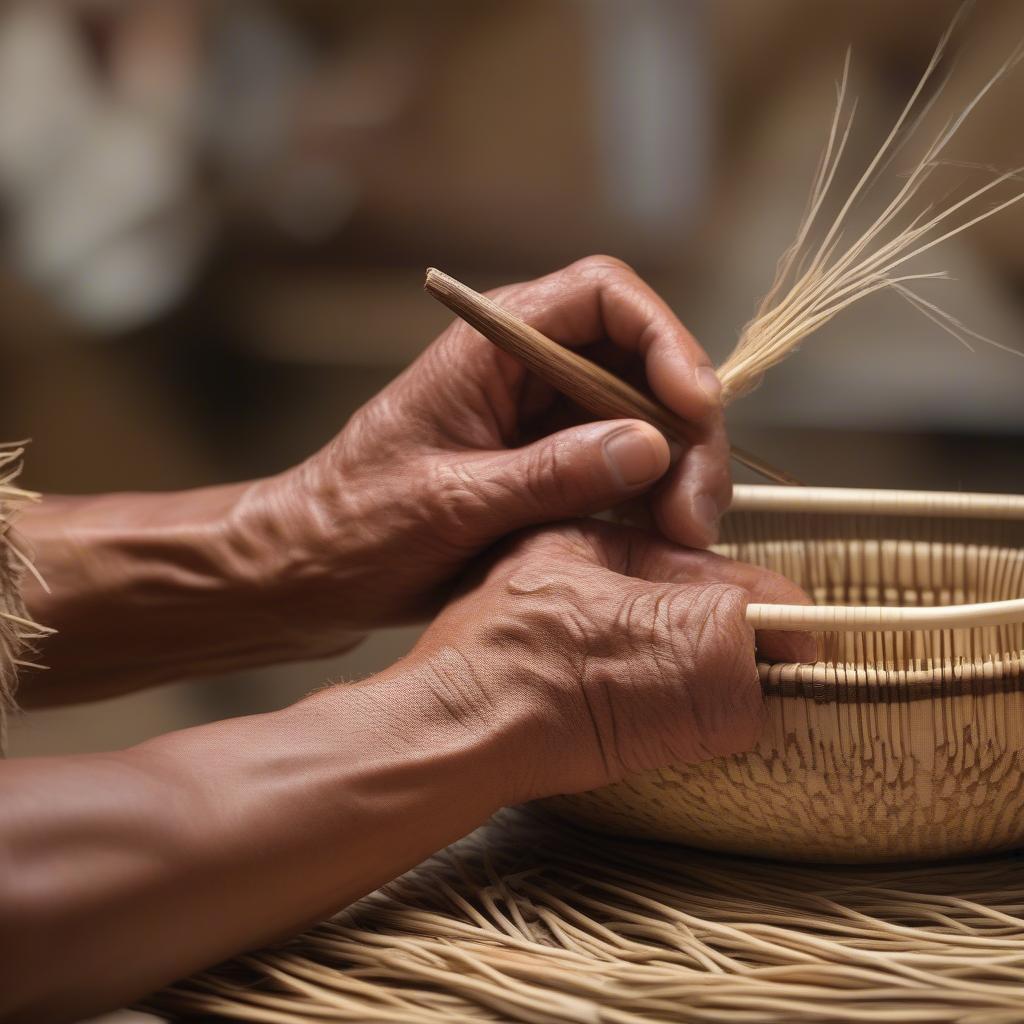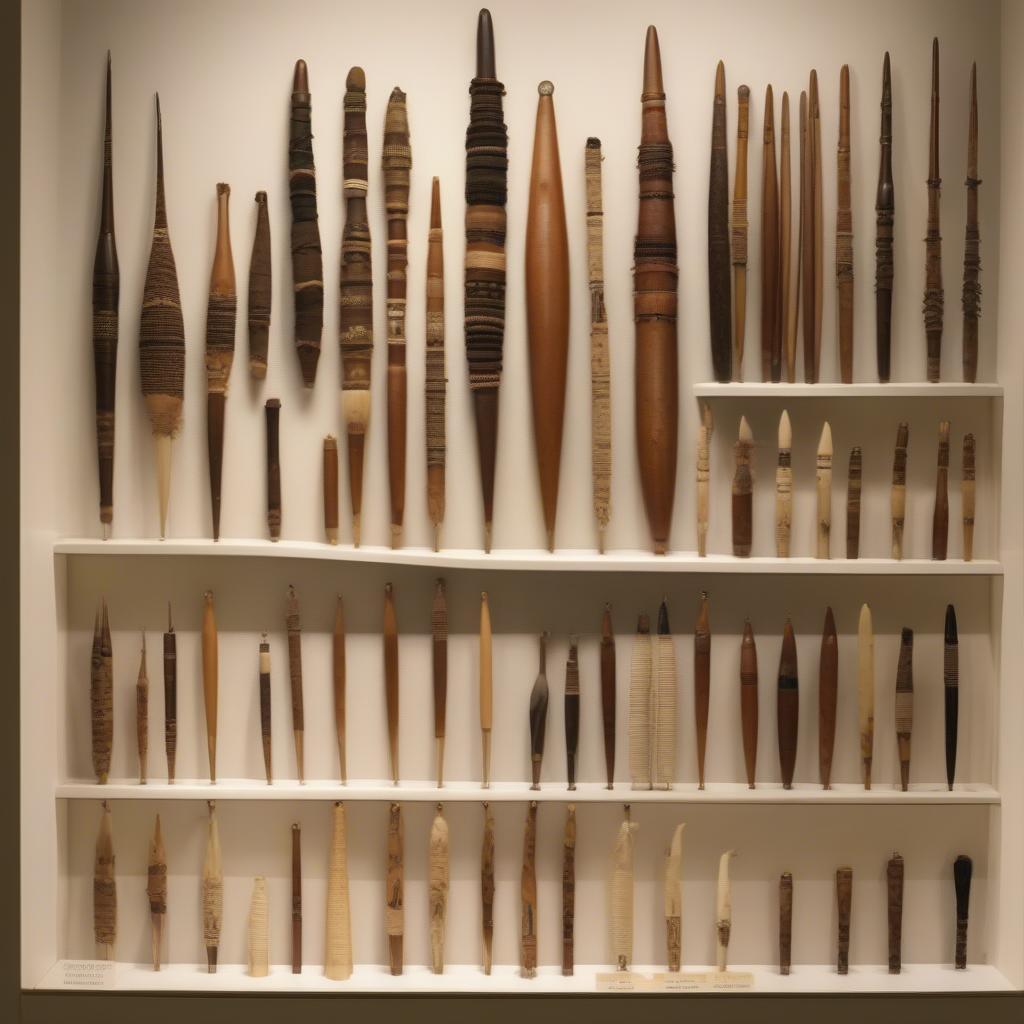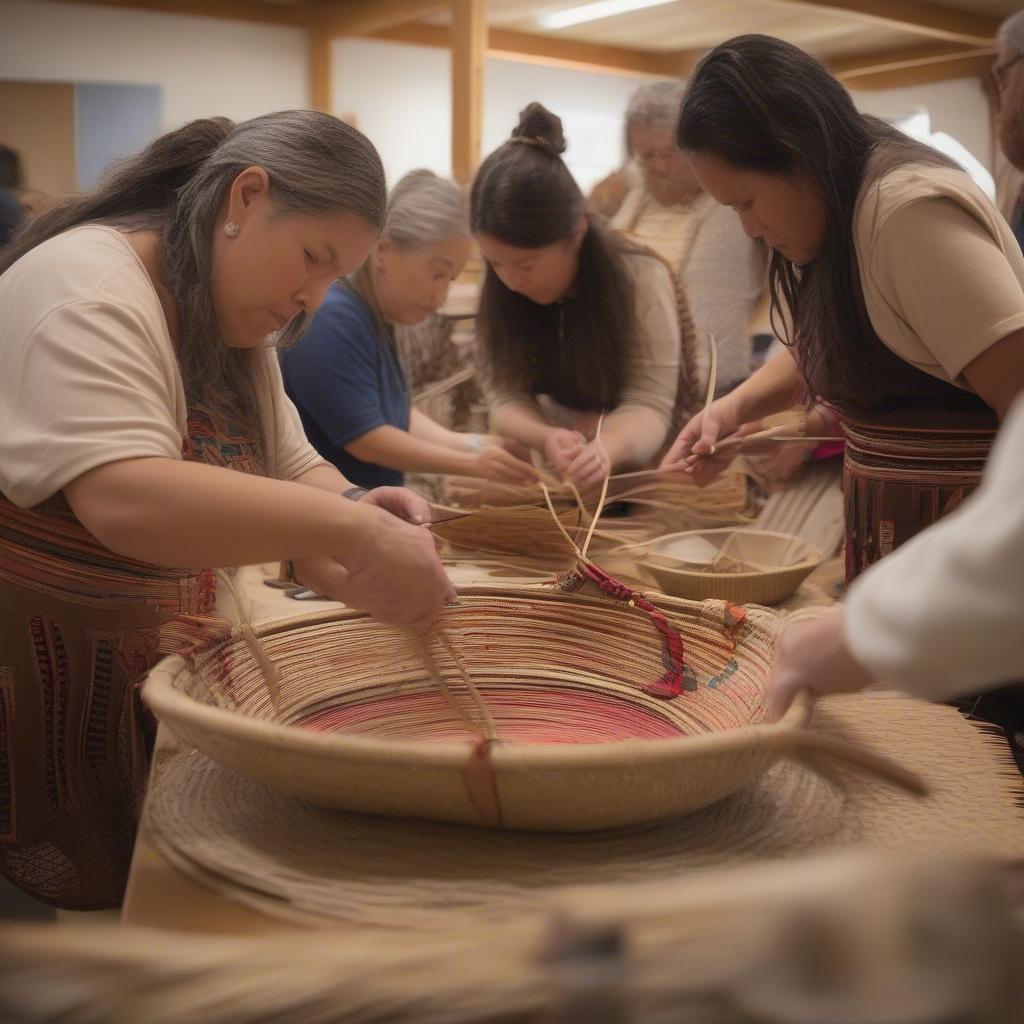Basket Weaving
Chumash Basket Weaving Awl: A Tool of Tradition and Artistry
The Chumash Basket Weaving Awl is more than just a tool; it’s a vital link to a rich cultural heritage. This article delves into the history, significance, and techniques associated with the chumash basket weaving awl, exploring its role in creating intricate and beautiful Chumash baskets.
The History and Significance of the Chumash Basket Weaving Awl
Chumash basket weaving is a renowned tradition among the Chumash people, indigenous to the central and southern coastal regions of California. These baskets, far from being mere utilitarian objects, served as artistic expressions, ceremonial pieces, and symbols of cultural identity. Central to this intricate craft is the chumash basket weaving awl, a pointed instrument traditionally crafted from bone, antler, or hardwood. The awl is used to meticulously separate fibers, create precise openings, and weave the complex patterns that characterize Chumash basketry. The awl itself represents a connection to ancestral knowledge, passed down through generations of weavers.
 Chumash artisan using a traditional bone awl to weave a basket.
Chumash artisan using a traditional bone awl to weave a basket.
Types of Chumash Basket Weaving Awls
While traditional awls were often made from bone or antler, modern Chumash weavers also utilize awls made from metal or other durable materials. The specific type of awl preferred often depends on the materials being used for the basket and the complexity of the design. Some awls are designed for finer work, featuring slender points, while others are sturdier, suited for manipulating thicker materials.
Bone and Antler Awls
The traditional materials for chumash basket weaving awls speak to the resourcefulness of the Chumash people. Bone and antler, readily available from hunted animals, were shaped and sharpened to create effective weaving tools. These natural materials hold a special significance, connecting the weaver to the land and the traditions of their ancestors.
Modern Awls
The chumash basket weaving awl has evolved alongside the craft itself. Today, metal awls are increasingly common, offering durability and sharpness. While modern materials offer advantages in terms of accessibility and longevity, many weavers still value the traditional bone and antler awls for their cultural significance and connection to ancestral practices.
 Various Chumash basket weaving awls made from bone, antler, and metal.
Various Chumash basket weaving awls made from bone, antler, and metal.
Techniques and Uses of the Chumash Basket Weaving Awl
The chumash basket weaving awl is employed in various stages of the basket-making process. From preparing the plant fibers to weaving intricate designs, the awl is an indispensable tool. Its sharp point is used to carefully separate and align fibers, create openings for weaving, and tighten the weave for a strong and durable finished product.
Preparing the Materials
Before weaving can begin, the plant fibers must be meticulously prepared. The chumash basket weaving awl plays a crucial role in this process, separating fibers and ensuring their evenness and pliability.
Weaving the Basket
The awl is used throughout the weaving process, creating precise openings in the existing weave and guiding new fibers through to create the desired pattern. The skill and precision of the weaver, combined with the effectiveness of the awl, determine the beauty and intricacy of the finished basket.
Preserving the Chumash Basket Weaving Tradition
The continued use of the chumash basket weaving awl is crucial for preserving the rich cultural heritage of Chumash basketry. By teaching these traditional techniques to new generations, the Chumash people ensure that this art form continues to thrive.
 A group of people learning Chumash basket weaving techniques using traditional awls.
A group of people learning Chumash basket weaving techniques using traditional awls.
Conclusion
The chumash basket weaving awl, a seemingly simple tool, holds immense cultural significance. It represents a connection to ancestral knowledge, a vital component of a cherished art form, and a testament to the ingenuity and artistry of the Chumash people. Learning about and appreciating the role of the chumash basket weaving awl is essential for understanding the rich history and beauty of Chumash basketry.
FAQ
-
What is a chumash basket weaving awl?
A chumash basket weaving awl is a pointed tool used to separate fibers, create openings, and weave intricate patterns in Chumash baskets. -
What materials are chumash basket weaving awls made from?
Traditionally, they were made from bone, antler, or hardwood. Today, metal awls are also common. -
How is the awl used in basket weaving?
It’s used to prepare fibers, create openings in the weave, and guide new fibers through to create patterns. -
Why is the chumash basket weaving awl important?
It’s crucial for preserving the Chumash basket weaving tradition and connecting to ancestral knowledge. -
Where can I learn more about Chumash basket weaving?
Numerous resources, including books, museums, and cultural centers, offer information on Chumash basketry. -
Are Chumash baskets still made today?
Yes, Chumash basket weaving is a living tradition, with contemporary artists creating beautiful and intricate baskets. -
What makes Chumash baskets unique?
Their intricate designs, the use of natural materials, and their cultural significance make Chumash baskets unique.
Do you have other questions about basket weaving, wicker, or rattan? Check out our other articles on Basket Weave! We cover a wide range of topics, from choosing the right materials to caring for your handmade treasures.
Need help? Contact our hotline at +84 388 951 999, visit our office in Hanoi, Vietnam or Tech Avenue, Suite 12, San Francisco, CA 94105, USA. We have a 24/7 customer service team ready to assist you.
